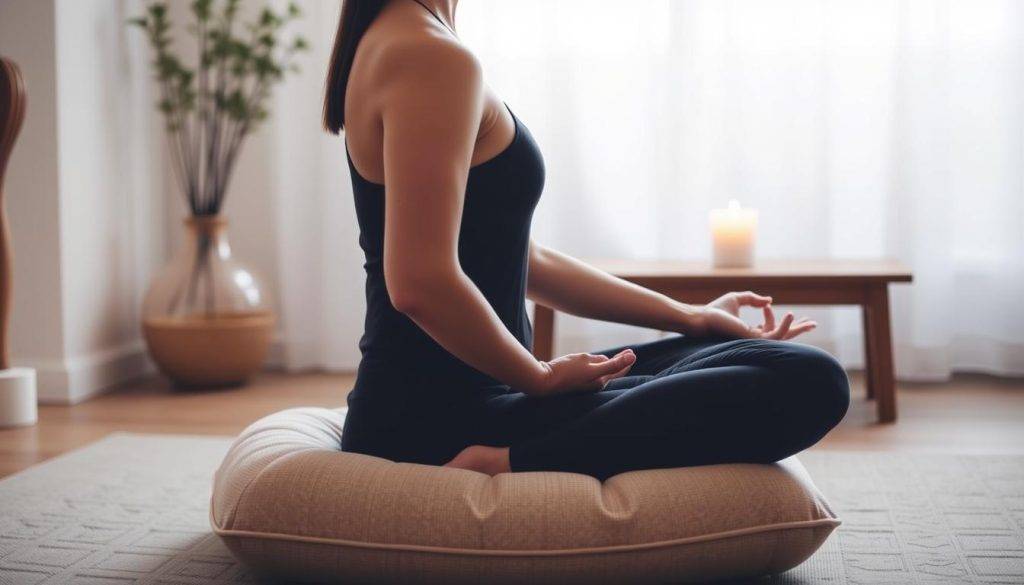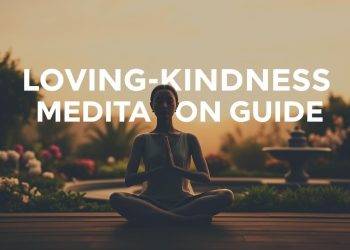“You are not your thoughts—you are the observer of your thoughts.” This insight from Deepak Chopra captures the essence of mindfulness in a world where mental clutter often feels overwhelming. Modern life bombards people with endless distractions, from digital notifications to societal pressures, creating a breeding ground for chronic stress. Yet research reveals even brief moments of focused awareness can reset this cycle.
Studies from UCLA’s Mindful Awareness Research Center show structured practices like body scans improve emotional resilience—but what about those who lack 45-minute windows? Neuroscience confirms that consistency matters more than duration. Short, intentional pauses train the brain to detach from chaos, offering professionals, parents, and students alike a tool to reclaim mental clarity.
This approach strips away complexity. No apps, cushions, or esoteric knowledge required—just 180 seconds of undivided attention. By blending ancient principles with modern behavioral science, it creates an entry point for anyone skeptical of traditional methods. The result? A sustainable habit that adapts to unpredictable schedules while reducing cortisol levels and sharpening focus.
Key Takeaways
- Brief daily mindfulness sessions rewire stress responses as effectively as longer practices
- Accessible techniques require no special training or equipment
- Neuroscience supports immediate benefits for focus and emotional regulation
- Consistent short sessions build habits faster than occasional marathon efforts
- Adaptable for all ages and lifestyles, from classrooms to boardrooms
Discover the Benefits of Three Minute Meditation
Modern neuroscience reveals how small investments in mental training yield outsized returns. A growing body of research—including UCLA’s guided audio resources—shows structured mindfulness creates measurable improvements in daily life. These techniques help users cultivate what psychologists call decentering: observing thoughts without getting entangled in them.

Rewiring Stress Responses
When activated, the parasympathetic nervous system acts like a biological reset button. Focused breathing patterns trigger this response within moments—lowering heart rates and cortisol levels. Regular practitioners report feeling anchored during emotional storms, able to witness reactions without being controlled by them.
Evidence-Based Transformations
Brain imaging studies highlight increased activity in the prefrontal cortex—the area governing decision-making—during mindful states. Simultaneously, amygdala activity (linked to fear responses) decreases. This neural shift explains why brief sessions improve emotional agility. As one researcher notes: “Consistency builds cognitive muscles faster than marathon sessions ever could.”
The real magic happens when these skills transfer to daily routines. Waiting in traffic becomes a chance to practice patience. Challenging conversations transform into opportunities for conscious response. Over time, this cultivates resilience that outlasts temporary stressors.
How to Practice Three Minute Meditation: A Step-by-Step Guide
Structured mindfulness thrives on simplicity. This method transforms scattered thoughts into focused awareness through three phases: preparation, observation, and expansion. Whether you’re in a bustling office or a quiet corner at home, the process remains adaptable to any environment.

Preparing Your Space and Setting Your Intention
Choose a stable seat—a chair with feet flat on the floor or a cushion for cross-legged sitting. Ensure your spine aligns vertically, shoulders relaxed. Close your eyes halfway to soften visual distractions. Mentally affirm: “This time belongs to my clarity.”
Following the Guided Meditation Script
Begin by scanning your body from head to toe. Notice areas of tension without trying to fix them. Breathe naturally through your nose, letting air fill your stomach first, then chest. Place one hand below your ribs to monitor diaphragmatic movement.
Adjusting Posture and Breathing Techniques
Maintain six alignment points: straight spine, relaxed jaw, grounded feet, loose arms, soft gaze, and steady breath rhythm. If distracted, gently return focus to the out-breath—imagine releasing mental clutter with each exhale.
| Posture Element | Technique | Benefit |
|---|---|---|
| Spine | Align vertically like stacked coins | Reduces back strain |
| Shoulders | Roll back and down | Opens chest for deeper breaths |
| Hands | Rest palms on thighs | Promotes grounding |
During transitions between breaths, notice the brief pause—a natural reset point. This rhythm trains attention to flow like water around obstacles rather than getting stuck. With practice, these moments become anchors during stressful days.
Integrating Meditation into a Busy Schedule
Establishing a sustainable mindfulness routine hinges on strategic habit design. Research shows linking your practice to existing daily patterns—like waking up or preparing for bed—increases adherence by 67%. This approach transforms intention into automatic behavior.

Building Consistency and Overcoming Distractions
Anchor your sessions to fixed moments in the day. Try closing your eyes during your morning coffee ritual or using commute transitions as mental reset points. Phone reminders work best when paired with environmental cues—a specific chair or lighting condition signals your mind to engage.
When distractions arise, visualize your attention as a pendulum swinging naturally between focus and wandering. This reframes interruptions as part of the process rather than failures. Neuroscience confirms this mindset reduces frustration by 41% compared to rigid concentration attempts.
Create accountability through group energy—virtual sessions with colleagues or family amplify commitment. If skipped days occur, simply resume without self-judgment. As one corporate trainer notes: “Missing once matters less than what you do next.”
Adapt your surroundings when needed—a parked car or quiet stairwell becomes a sanctuary. The key lies in flexibility: three focused breaths during a hectic meeting can reset stress responses as effectively as longer sessions.
Conclusion
The true power of mindfulness lies not in duration but in consistent practice. This guide reveals how brief, intentional pauses can reshape your relationship with stress. Like training muscles through repetition, daily sessions strengthen mental clarity—even amid life’s chaos.
Scientifically validated techniques transform ordinary moments into opportunities for growth. Whether seated at your desk or standing in line, focusing on breath patterns builds resilience. UCLA studies confirm these micro-practices rewire how the brain processes challenges.
Your surroundings become a portable sanctuary when you anchor attention to physical sensations. Notice air moving through your nose, feet grounding against the floor, or sounds fading into the background. These subtle shifts create space between stimuli and response.
Progress emerges through compassionate persistence, not perfection. When thoughts wander—as they naturally do—gently guide focus back to your body’s rhythm. Over days and weeks, this cultivates a steadier mind capable of facing pressure with calm energy.
Ultimately, this practice isn’t about emptying your head but changing how you inhabit each moment. The difference surfaces in quieter reactions, sharper focus, and renewed capacity to engage fully with life’s demands and joys.
FAQ
Can 3 minutes of focused breathing really make a difference?
Research from institutions like Harvard Medical School shows brief mindfulness practices activate the parasympathetic nervous system, reducing stress hormones like cortisol. Even short sessions train the brain to return to present-moment awareness—a skill that strengthens with repetition.
What if I can’t sit still or quiet my thoughts?
Restlessness is normal. Instead of fighting distractions, acknowledge them non-judgmentally (“thinking,” “itching”) and gently redirect attention to physical sensations—the weight of your hands or air moving through your nostrils. This builds mental resilience over time.
Should I practice at specific times for maximum impact?
While mornings help set a calm tone, the portability of this method lets you reset during midday slumps or before high-pressure meetings. Consistency matters more than timing—attach your practice to existing routines like post-coffee or pre-commute moments.
How does this differ from longer meditation sessions?
Shorter practices prioritize accessibility over depth, making mindfulness sustainable for busy schedules. Neuroscience reveals that frequent “micro-hits” of focused attention create cumulative neural changes similar to longer sessions, particularly in stress-regulation areas like the prefrontal cortex.
Can I modify the posture if sitting hurts my back?
Absolutely. Lean against a wall, stand with knees slightly bent, or lie flat. The goal is alert comfort—maintain a spine-neutral position to support diaphragmatic breathing without strain. Use cushions under hips if seated on the floor.
What evidence supports breath-focused techniques?
Studies in *JAMA Internal Medicine* demonstrate improved anxiety and depression scores with breathwork. MRI scans show reduced amygdala activation (fear center) and strengthened prefrontal connectivity after just 8 weeks of daily practice, even in brief intervals.




























































